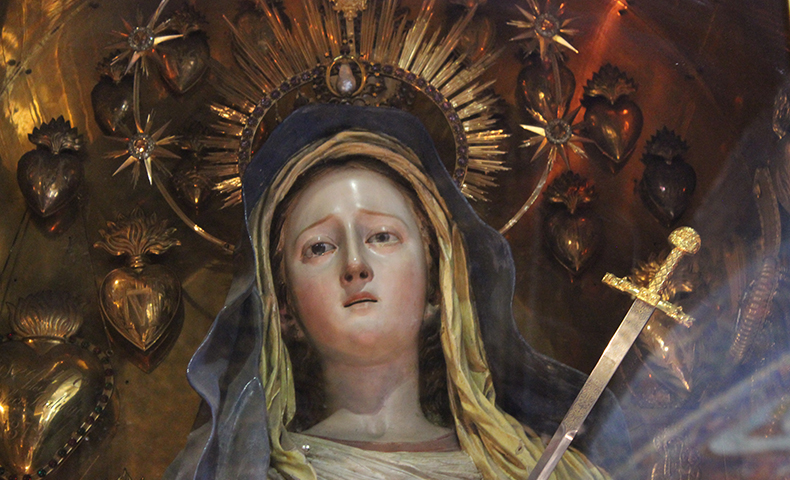Our Lady of Sorrows, feast of the day for September 15th

The story of Our Lady of Sorrows
For a while there were two festivals in honor of the Addolorata: one dating back to the XNUMXth century, the other from the XNUMXth century. For a while both were celebrated by the universal Church: one on the Friday before Palm Sunday, the other in September.
The main biblical references to Mary's pains are in Luke 2:35 and John 19: 26-27. The Lucanian passage is Simeon's prediction about a sword that pierces the soul of Mary; the John passage brings back the words of Jesus from the cross to Mary and the beloved disciple.
Many early Church writers interpret the sword as Mary's pains, especially when she saw Jesus die on the cross. Therefore, the two passages are brought together as prediction and fulfillment.
Saint Ambrose in particular sees Mary as a painful but powerful figure on the cross. Mary remained fearless at the cross while others fled. Mary looked at the wounds of the Son with pity, but she saw in them the salvation of the world. While Jesus was hanging on the cross, Mary was not afraid of being killed, but she offered herself to her persecutors.
Reflection
John's account of Jesus' death is highly symbolic. When Jesus hands his beloved disciple to Mary, we are invited to appreciate Mary's role in the Church: she symbolizes the Church; the beloved disciple represents all believers. Like Mary the mother of Jesus, she is now the mother of all his followers. Also, when Jesus died, he delivered his Spirit. Mary and the Spirit cooperate in generating new children of God, almost an echo of Luke's account of the conception of Jesus. Christians can be confident that they will continue to experience the caring presence of Mary and the Spirit of Jesus throughout their lives and for the whole story.